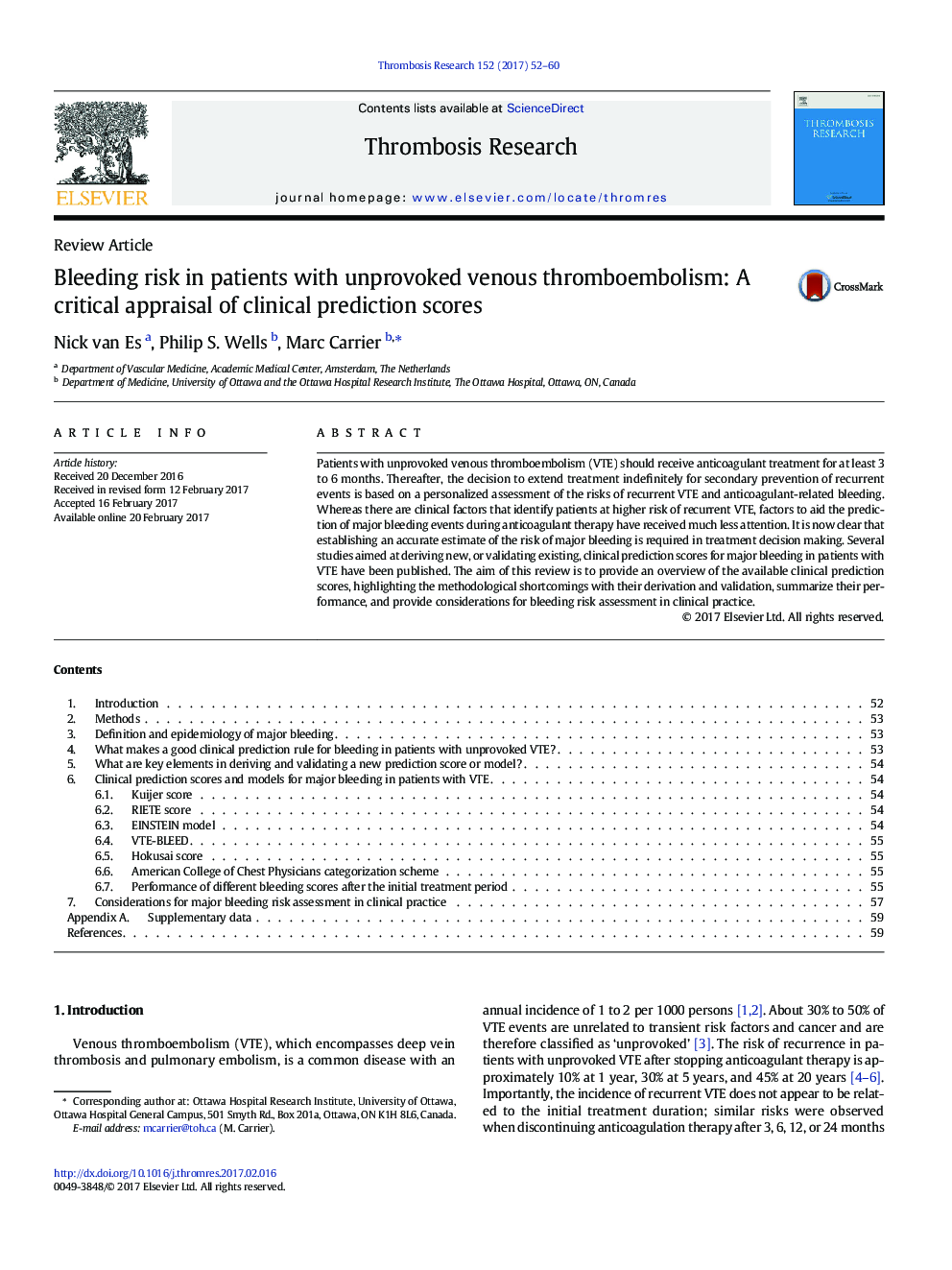| Article ID | Journal | Published Year | Pages | File Type |
|---|---|---|---|---|
| 5622166 | Thrombosis Research | 2017 | 9 Pages |
â¢Unprovoked venous thromboembolism should be treated for at least 3 months.â¢Extended treatment should be considered in patients with a low bleeding risk.â¢Clinical prediction scores can help clinicians estimating the risk of bleeding.â¢Currently available scores have shortcomings, perform poorly, or lack validation.â¢The use of prediction tools for major bleeding cannot currently be recommended.
Patients with unprovoked venous thromboembolism (VTE) should receive anticoagulant treatment for at least 3 to 6Â months. Thereafter, the decision to extend treatment indefinitely for secondary prevention of recurrent events is based on a personalized assessment of the risks of recurrent VTE and anticoagulant-related bleeding. Whereas there are clinical factors that identify patients at higher risk of recurrent VTE, factors to aid the prediction of major bleeding events during anticoagulant therapy have received much less attention. It is now clear that establishing an accurate estimate of the risk of major bleeding is required in treatment decision making. Several studies aimed at deriving new, or validating existing, clinical prediction scores for major bleeding in patients with VTE have been published. The aim of this review is to provide an overview of the available clinical prediction scores, highlighting the methodological shortcomings with their derivation and validation, summarize their performance, and provide considerations for bleeding risk assessment in clinical practice.
